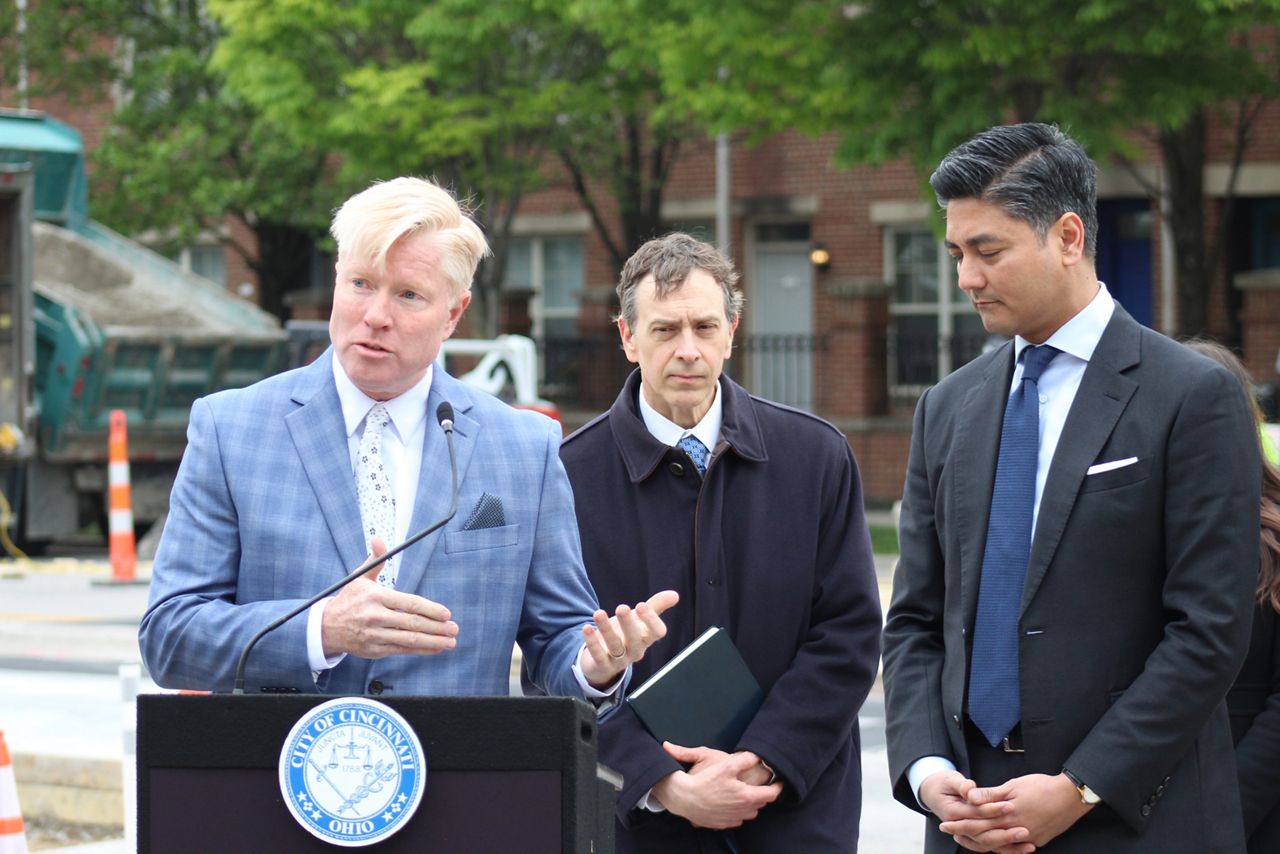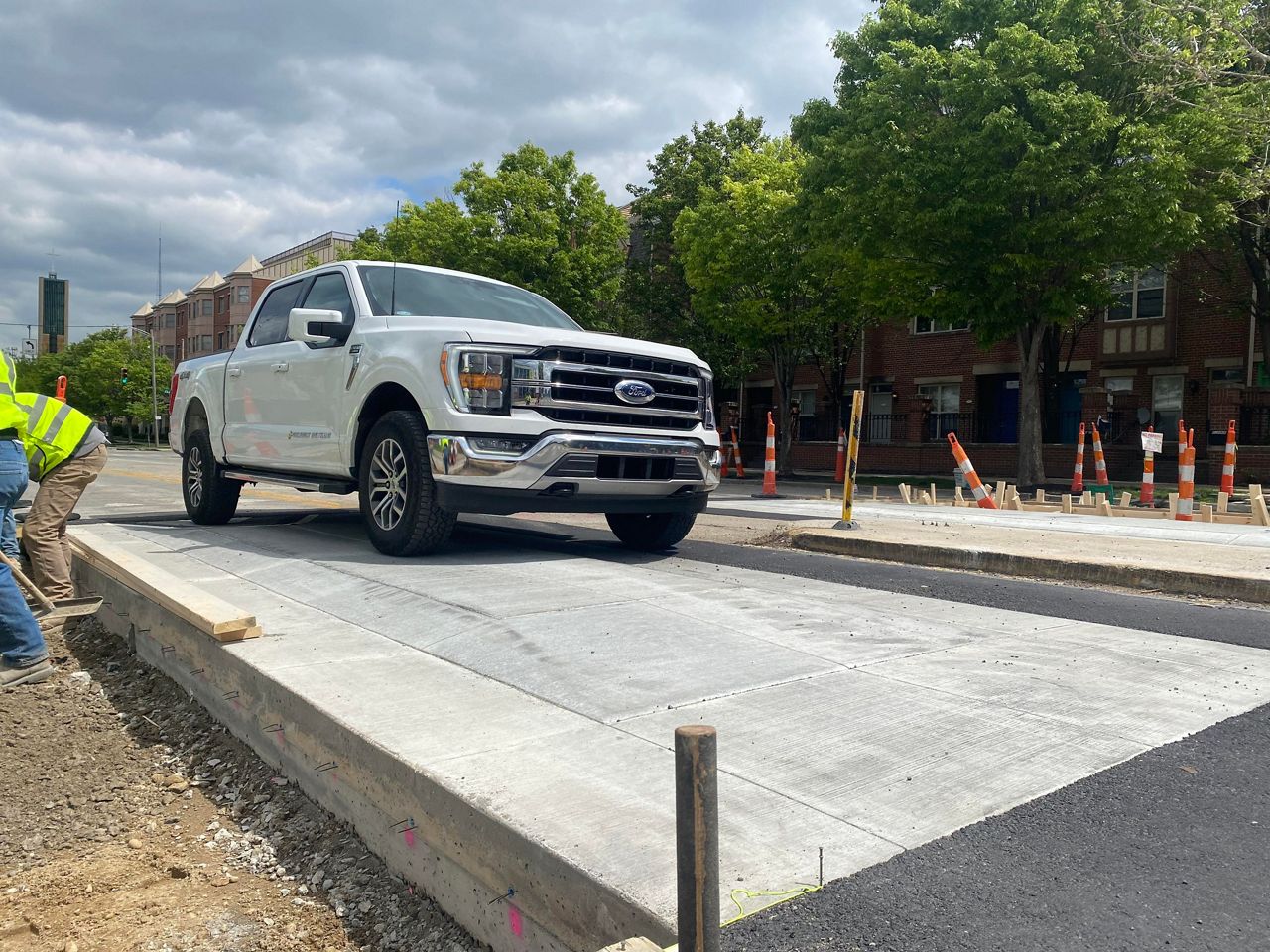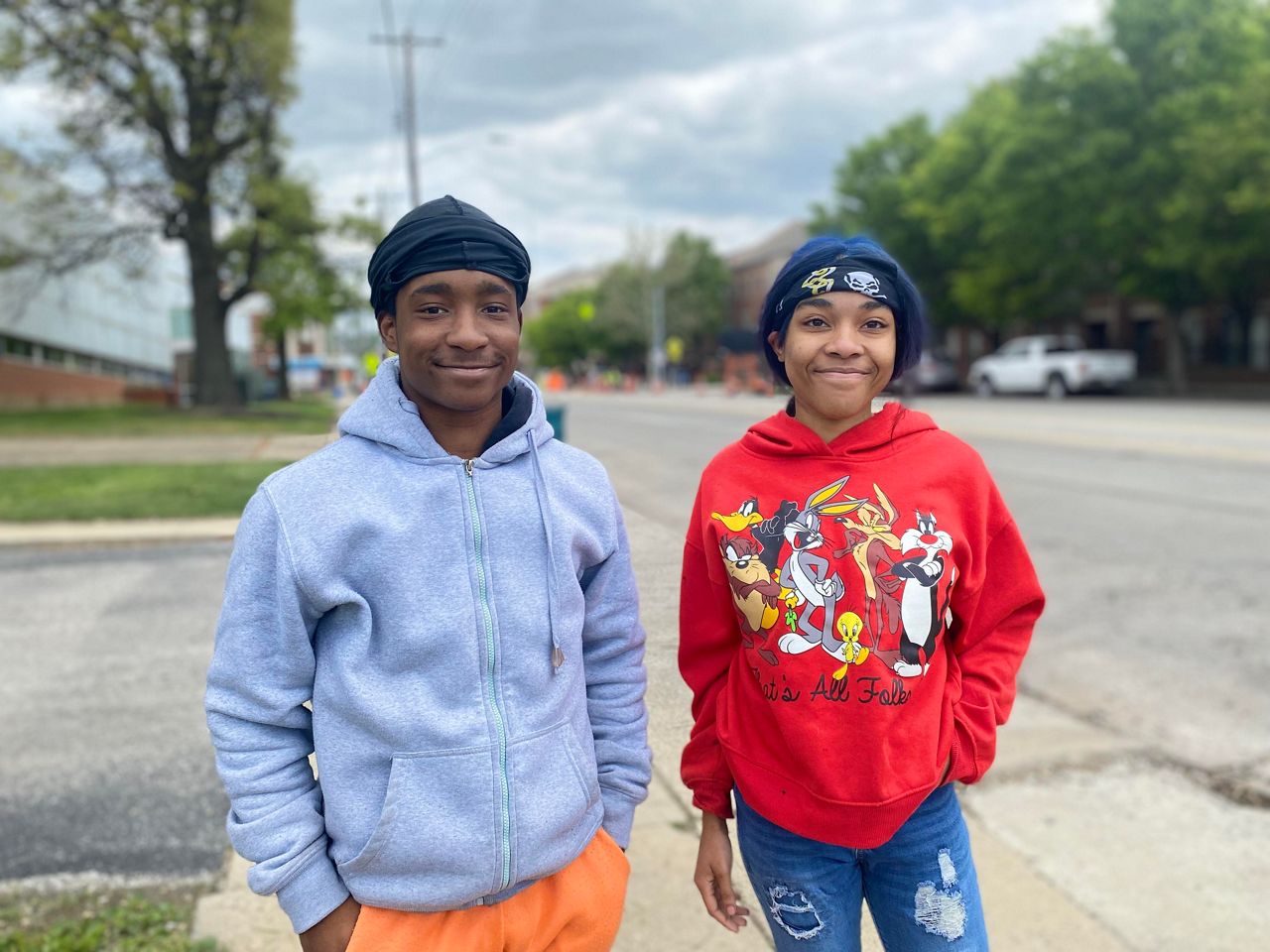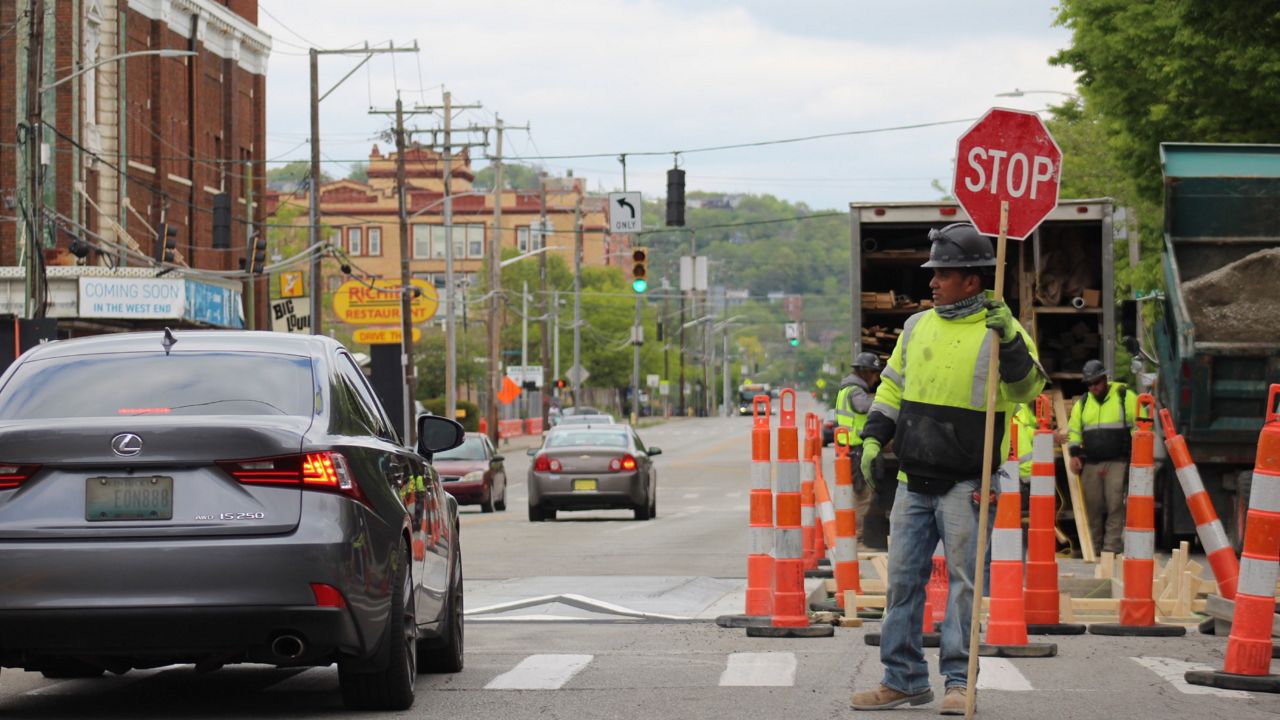CINCINNATI — Mykell Henderson and Alesecia Palmore stood and watched as car after car drove past them as they waited to cross Linn Street near Chestnut Street around midday on Monday.
It’s not an uncommon scene. Linn Street is one of the busiest roadways running through the heart of Cincinnati’s West End neighborhood. Henderson described it as having a freeway-like feel sometimes because of how fast people drive there.
The spot where Henderson and Palmore were crossing is near Lincoln Recreation Center, a playground, and a few other community services. It’s only a few blocks from City Hall.
Henderson said he’s been walking across the street and had drivers speed up. He assumes they either want to intimidate him into moving faster or try to beat him through the crosswalk.
“They just don’t want to stop,” said Henderson, a West End resident.
“It’s kind of absurd how fast they go,” he added. “I wouldn’t say it’s scary, but people have to be careful.”
To help improve pedestrian safety in the area, city of Cincinnati crews spent Monday installing sets of concrete speed cushions directly in front of the recreation center.
What You Need To Know
- Permanent speed cushions are being installed this year in 20 Cincinnati neighborhoods, starting with the West End
- The traffic-calming tool forces drivers to slow down while driving over the table-shaped, elevated bumps
- Cincinnati is the first city in the region to install concrete speed cushions
- The city hopes to expand on the success experienced during a temporary pilot program in 2021
A speed cushion is like a speed bump but much larger and table shaped. They’re used to force drivers to slow down when they approach it, or they’ll risk damaging their car or truck. The design features cutouts that make it so fire trucks and ambulances can pass without having to slow down much, if at all.

Linn Street is the first street in the region to have a permanent street cushion installed, Mayor Aftab Pureval said Monday during a press conference on Linn Street. The city plans to install 21 other sets in 19 neighborhoods throughout the year.
“If we want the kind of neighborhoods that have growth and revitalization…, families have to feel safe going to school, going to local shops and going to our beloved parks,” Pureval said. “Their connection with the rest of their neighborhood needs to be safe and secure. And that’s what we’re investing in today.”
The speed cushion program stems from a months-long pilot effort in 2021. DOTE installed a set of temporary rubber speed cushions on a stretch of Winneste Avenue in Winton Hills.
Before the pilot, drivers in that area exceeded the 25-mph speed limit 95% of the time, per DOTE. The average recorded speed during the pilot was 37 mph, and a quarter of those drivers exceeded 40 mph.
That 40-mph figure is important because there’s an 80% chance a person hit by a car traveling 40 mph will either suffer a serious injury or die, according to the U.S. Department of Transportation.
Data collected during the pilot showed a “dramatic decrease in speeding,” said Melissa McVay, who leads the pedestrian safety program for DOTE.
After installing the speed cushions, only 11% of vehicles on Winneste Avenue exceeded the speed limit. The average speed dropped to 20 mph in that area. The city didn’t record a single vehicle moving faster than 40 mph during that period.
DOTE determined the 22 initial spots for the permanent speed cushions as part of its annual pedestrian safety program. As part of that process, McVay works with leaders in all 52 neighborhoods to identify two priority locations. DOTE then evaluates each area based on speed data and crash data.
On Linn Street, roughly 50% of vehicles exceed the speed limit, McVay said.
Another key factor is their proximity to the neighborhood business district and other places where people tend to walk, such as schools, parks, libraries and recreation centers. A key stat is the rate of car ownership in the area, McVay said, because those people are more likely to walk, ride a bike or take the bus.

Council Member Mark Jeffreys believes these projects aren’t just meant to protect residents. The outspoken pedestrian and bike safety advocate referred to them as having the power to “unlock opportunities” in neighborhoods where people don’t feel safe walking around.
There’ve been 82 total pedestrian-related crashes across the city so far this year, based on DOTE data. One of those was fatal.
Jeffreys is a proponent of what’s known as the “complete street” concept. It asks traffic engineers to take a people-first focus rather than just trying to move motorized vehicles through an area as quickly as possible.
These types of redesigns feature protected bike lanes, bus lanes, bump-outs, expanded sidewalks, and other traffic-calming improvements. But they also include aesthetic upgrades, such as new trees or decorative streetscapes.
The city is reviewing several complete street proposals, including one for Linn Street.
Keith Blake, a former president of the neighborhood’s community council, thanked the city for listening to their request. He recalled the memory of a beloved West End resident, Donna Pringle, who died after being hit by a driver while walking close to the spot of Monday’s press conference.
“This is what residents have asked for. This is what we’re delivering. And… they work,” Jeffreys said.
Pureval, Jeffreys and most other members of this City Council took office a little more than a year ago. The first-term mayor said he and his elected peers walked into a “pedestrian safety crisis.”
There were 269 pedestrian crashes in 2022.
Pureval noted the city has made progress in recent years but stressed the city is “not out of the woods.”

Last year, the city earmarked more than $7 million — a major portion of which came from pandemic-related federal money — for pedestrian safety projects.
The city has used only a little of that money so far, McVay said. Most of it has gone toward the speed cushion program and another adding hardened centerlines to dangerous intersections. The goal is to force drivers to slow down when turning. The program launched in April, and they’re starting with 11 locations.
Other traffic-calming tools they plan to use are several types of curb extensions and raised crosswalks. Many of those projects should be done by fall, McVay added, saying some may extend into next year.
The city is in the middle of its current budget cycle. While he didn’t go into specifics, Pureval said he expects spending on pedestrian safety to “remain a top priority” for both this City Council and his office.
As for the West End, both Henderson and Palmore think there’s room for additional improvement up and down Linn Street. But they thought Monday was a good start.
“I think this is exactly what we need,” Henderson added.



